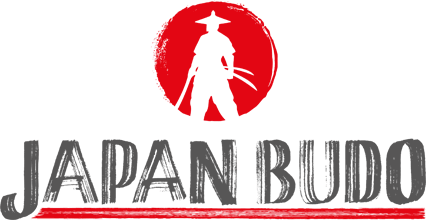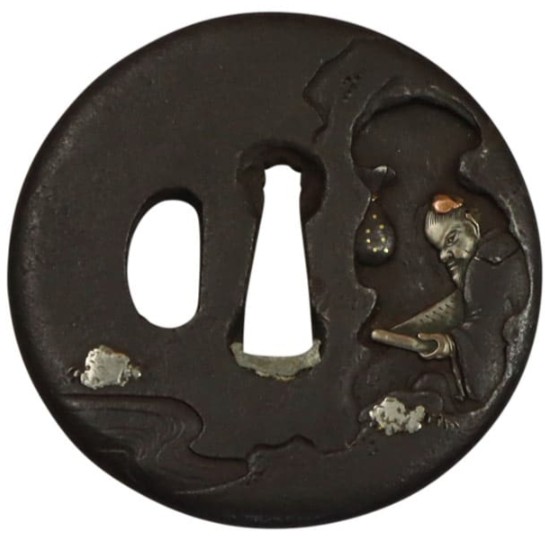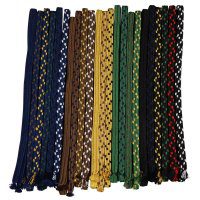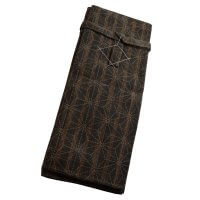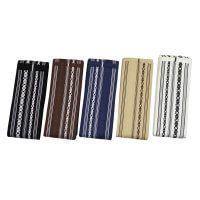What are tsuba in katana?
In katana and other samurai swords, the element that is called the thrusting blade or crossguard in European swords is called tsuba.
There are collectors of Japanese guard blades all over the world. The crossguard on the Japanese sword has itself undergone an interesting historical development.
Designs and schools
The evolution of the tsuba has accompanied the development of the Japanese sword throughout its history. The design changed according to current trends and tastes.
The early examples, which are summarised under the terms ko-tosho (古刀匠) and ko-kachushi (古甲冑師), were still made by swordsmiths and armourers and were very massive and rather simple steel thrusting blades.
Over time, different schools developed with various techniques and the design of the tsuba was refined. In the Edo period, practical use became less important and artistic elaboration reached its peak.
There are many designs and schools. The Goto school was particularly well known in the context of sword fittings. It produced many very talented masters. For example, for a time it was also part of the prescribed ceremonial dress of the samurai to wear Goto fittings on the sword.
Also worth mentioning is the Nara school with its masters. Goto and Nara works were mainly made of soft metal like shakudo.
Steel (Tetsu) or soft metal (Kinko)
Among collectors there are two large camps, namely the friends of iron tsuba and fans of soft metal.
Tetsu
Tetsu tsuba are iron tsuba, more precisely they are made of steel. Iron tsuba are very robust and were the blade of choice for samurai when going into battle.
Collectors appreciate their stability and robustness. They are often somewhat less ornate than the soft metal models.
Kinko
Kinko Tsuba is an umbrella term for Japanese stabbing blades made of soft metal. Metal alloys were used for this. The most common are
Shakudō (赤銅)
Shakudo is an alloy of copper with an additional gold content of 5-7%. This alloy is considered particularly precious and many high-quality works are made from it. Shakudo manufactured.
The material forms a beautiful black patina.
Shibuichi (四分一)
A mixture of approx. 75% copper and 25% silver. Shibuichi has a grey/silver to blue-grey colour depending on the mixing ratio.
Sentoku (宣徳)
Corresponds approximately to today's brass alloy. It consists of a mixture of copper and zinc. Sentoku has a golden yellow colour.
Soft metals can be easily worked and artistically designed.
NBTHK evaluation system
Just as with nihonto (Japanese swords), there are several institutions in Japan that evaluate tsuba and issue the corresponding certificates. As with swords, the NBTHK is the best-known institution and issues reliable classifications.
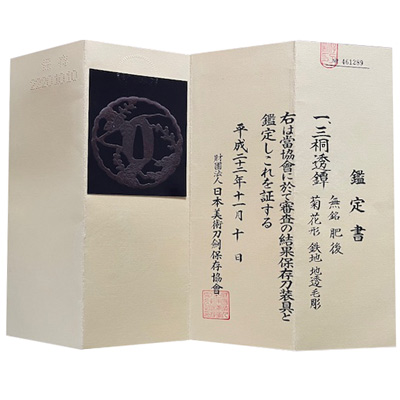
The categorisation of the NBTHK is broken down as follows
NBTHK Hozon Tosogu papers
Hozon papers are printed on yellow paper and confirm that this is a genuine work from Japan and is a copy worth preserving.
NBTHK Tokubetsu Tosogu Papers
These papers indicate that the mount is particularly worthy of preservation. The Tokubetsu certificates are printed on orange paper.
For many museums, this status is the minimum requirement for their collections.
NBTHK Juyo Tosogu Papers
Juyo papers are issued for particularly important art-historical specimens. Only a few tsuba receive this honour each year. Juyo are rare and correspondingly valuable.
Above these classic classifications, which also correspond to the classifications of swords and can be recognised by the colour of the respective paper (the current system is: Hozon=yellow, Tokubetsu=orange, Juyo=white), there are also tsuba, which are considered national cultural property in Japan and may not be taken out of the country.
What makes Tsuba an interesting collecting area?
The detailed design and the rich history behind iron and kinko tsuba make the objects very popular.
The different designs and motifs make it easy to focus on a particular theme and build up a collection according to your own preferences.
Although high-quality and rare collector's items can cost thousands of euros, the prices are still relatively low compared to swords. Many fans of samurai and Japanese culture therefore choose to collect tsuba instead of nihonto.
In our online shop you will find a selection of antique tsuba from Japan. There is a regularly changing range in this area, which you can find via this link: https://japan-budo.com/antike-tsuba-japan/.
As you can also obtain martial arts accessories from us, we offer a wide range of new Tsuba from Japanwhich are normally mounted on Iaito. Certain motifs can be purchased comparatively cheaply here. You can find our selection via this link: https://japan-budo.com/tsuba-katana-japan/
